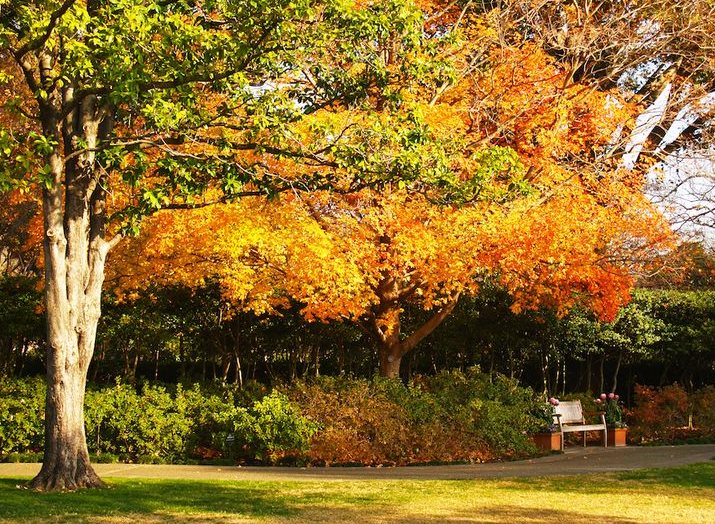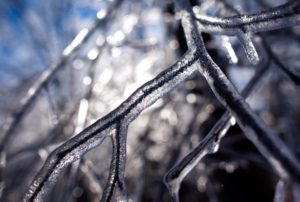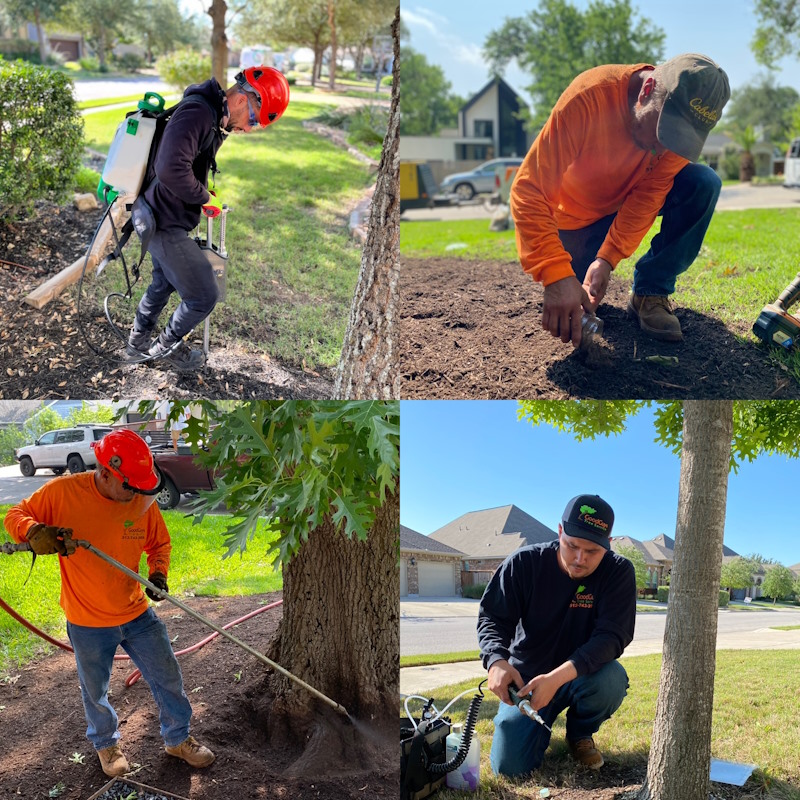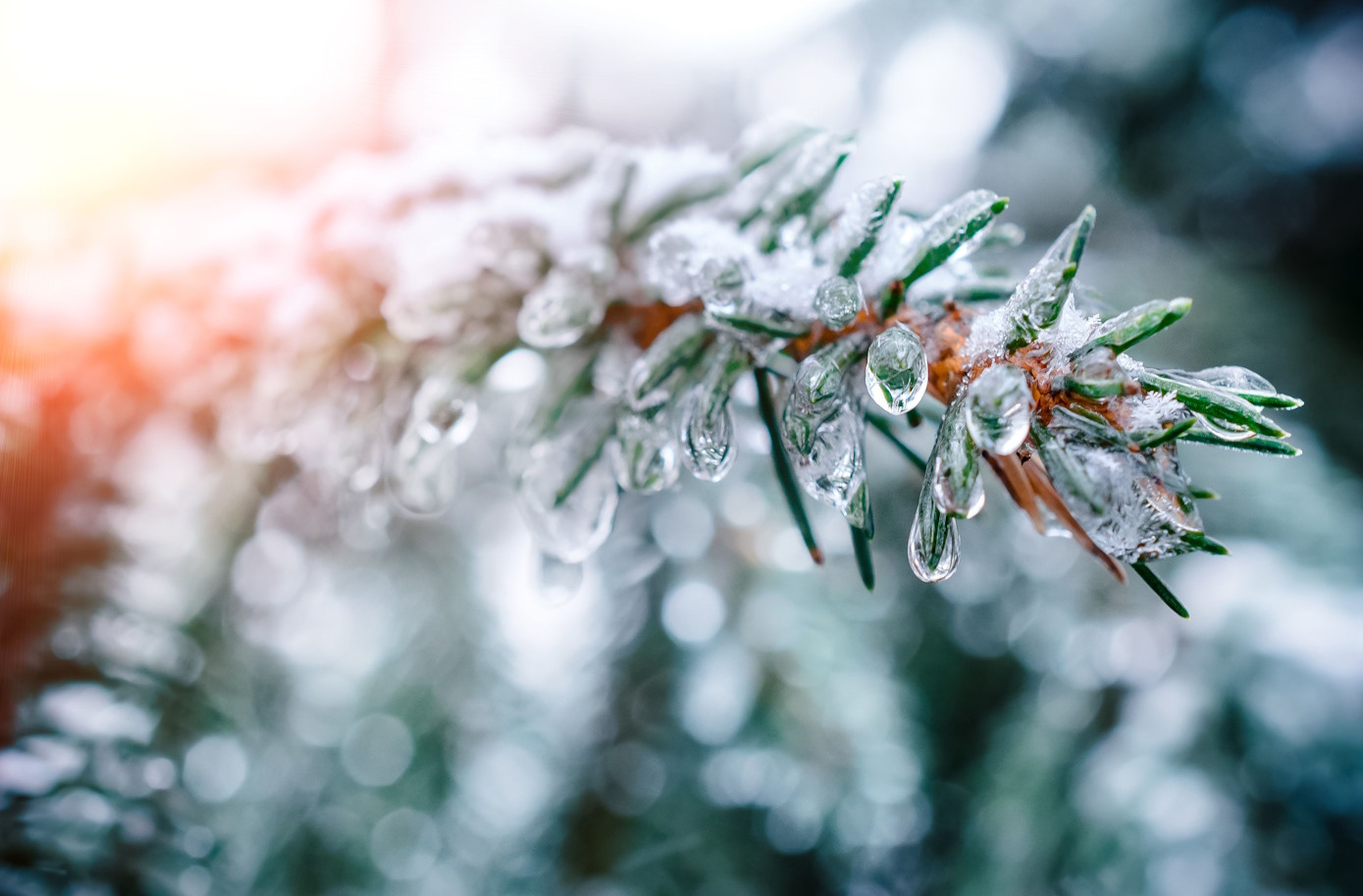Don’t Be Fooled by Pleasant Fall Weather. Winter is Coming
Fall is a favorite time of the year for a good number of us here in Texas. Cooler weather, changing colors, football season, and the holidays just around the corner are just a few of the things that come to mind as reasons why that might be. But before you get to excited about Pumpkin Spice lattes and leaf piles, consider the reason your trees are dropping all their leaves. Nasty weather is headed our way!
As the days get shorter, trees sense the fading light and cooler temperatures. This triggers a natural process in most deciduous trees. Production of auxin, a plant hormone, is halted. Leaves stop creating chlorophyll, which besides being the photosensitive molecule all plants use to turn light in to energy it can use, it is also what makes most leaves green. As the chlorophyll breaks down without being replaced, the color of the leaf changes revealing its true stripes. Eventually the leaf dies and falls to the ground.
But this is natures wisdom at its finest! Deciduous trees are simply avoiding the struggle of surviving the dark and cold winter months by retreating into a dormant state. While dormant, it is better protected against freezing temperatures, high winds, and heavy ice. That said, there are always casualties in nature.
Trees still need water throughout the Fall and Winter months. A Winter drought can damage or kill your trees while they sleep.
Often trees still carry literally too much dead weight. Dropping all the leaves is sometimes not enough canopy reduction to escape destructive ice accumulation during a winter storm.
It is common to see healthy trees threatened by unhealthy or weakened neighboring trees. If a nearby tree succumbs to ice or wind, it’s up to chance whether it takes out other trees with its sudden collapse.
Poor drainage can also pose a risk to many tree species. A winter with heavy rains can threaten trees that find themselves in low laying areas or in walled off yards where standing water is a problem. Trees stuck in completely saturated soils during the winter months have an increased vulnerability to frost crack, a circumstance where significant temperature fluctuation can freeze the water within the inner layers of the tree and seriously damage or destroy it.
Prepare For Spring Too!
Spring may seem too far off to concern yourself with, but trees will be preparing themselves all winter for the first sign warm weather! See how the latest research can help you help your trees.
Looking Up
One of the great things about all those leaves falling out of your trees is now you can fully inspect the upper canopy. As you rake up those leaves this fall, take a break and look up.
As you do you might see dead branches that were not visible all summer. That’s okay, summer leaves can hide problems from even expert eyes. Now that you spot them, note the location and size of these castoffs. If you see any large limbs that appear to have died, it might be a good time to have it removed, and if possible, discover why it did die back.
If you see a good bit of smaller twigs and dead sticks crowding the canopy, it may be helpful to have much of it removed to lighten the arms of your tree. During an ice storm, every twig and branch gets weighed down with ice. The dead ones do as well, adding not only their own unnecessary weight but the heaviness of all the extra ice now clinging to them.
Check For Cracks
Summer storms can damage trees as well. Sometimes splitting and separation of major leads can remain unnoticed while the tree is enveloped by its own canopy. A thorough inspection is far easier after the leaves have fallen. If you discover a separation crack soon enough, it may only need cabling to restore its vitality and ultimately the tree may fully recover!
Mulching Retains Moisture
It’s not news to anyone, but it really can make the difference during a dry spell. Trees can benefit from 2”-3” of mulch covering the ground all the way out to the canopy dripline.
TREES IN A FOREST HAVE A CARPET OF LEAVES AS THEIR “MULCH”!
Decision Time
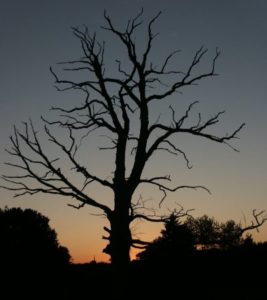
Dead trees make for great Halloween decorations, but they might be a little too scary for your yard.
You know the tree I’m talking about. The tree that has been struggling for years and finally looks done. Perhaps it has been done for years and you’ve just been ignoring it hoping it doesn’t become a problem. Give it enough time and it will though, the right gust of wind and it will come crashing down for sure. Hopefully it won’t damage other trees or your belongings when it does, but you shouldn’t wait and leave it to chance. Time to safely take it down.
The sooner you do, the sooner you can replace it.
Late Fall is the IDEAL time to plant trees. With young trees dormant, transplanting is much less taxing on your new tree. Roots have the highest reserves of stored nutrients ready for spring growth, and without a canopy flushed with foliage, water consumption is reduced, lowering the stress on the root system.



